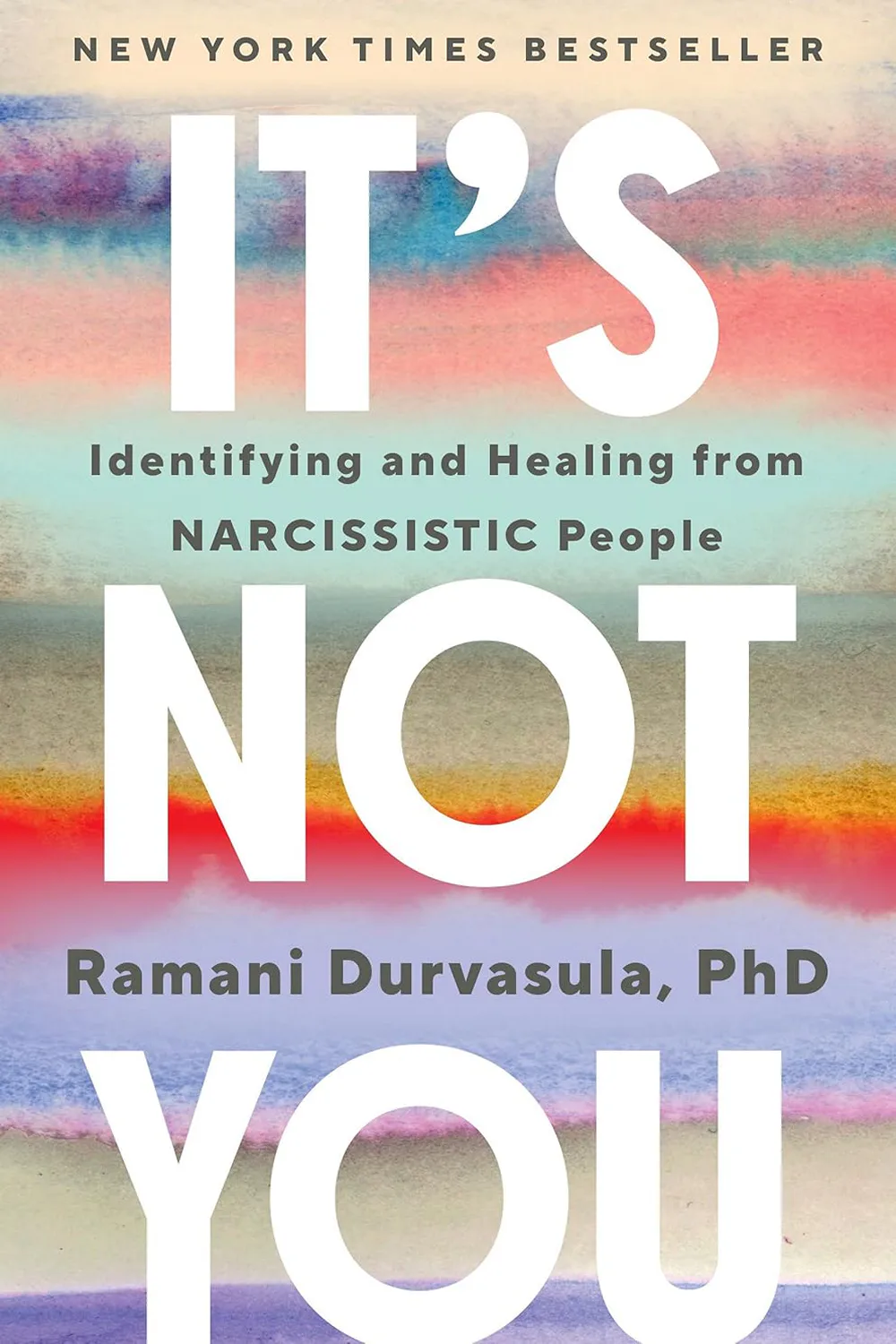Today's Thursday • 9 mins read
If you’ve been in a relationship with a narcissist, you might notice something strange happening.
Even after you leave, you still feel stuck. You check your phone obsessively. You replay conversations in your mind. You feel empty without their attention, however hurtful it was.
This pattern has a name: codependency. It’s a very common aftereffect of narcissistic relationships, and it can persist long after the relationship ends.
And it isn’t just “needing someone too much.” It’s more.
What Codependency Actually Looks Like
A codependent organizes their whole life around the other person. They reshape their priorities, time, choices, and identity to center on the other’s needs, moods, and approval.
They constantly accommodate, excuse harmful behavior, cover their failures, and take responsibility for the other person’s feelings or reputation.
Codependency Traits: people‑pleasing, needing to be needed, excessive caretaking, poor or no boundaries, high tolerance of another’s abuse or dysfunction, and an identity tied to the relationship.
“A codependent person is one who has let another person’s behavior affect him or her, and who is obsessed with controlling that person’s behavior.” – Melody Beattie, Codependent No More (1986)
Codependency is a dysfunctional relational pattern in which one person’s purpose becomes tied to managing another person’s needs, emotions, and discomforts. The codependent enables harmful behavior while deriving self‑worth from caretaking or control.
Note: Codependency is not a DSM‑5 diagnosis. Still, mental health professionals use the term because it captures a real, harmful pattern that causes significant suffering.

Signs You’ve Developed Codependency After Narcissistic Abuse
If you have codependent traits and are (or were) in a relationship with a narcissist, you may:
- Feel incomplete without validation. You define your self‑worth by their approval; good days hinge on their praise, bad days on their displeasure.
- Struggle to make decisions alone. You second‑guess yourself, seek external confirmation, and avoid choices that might provoke disapproval.
- Have difficulty setting boundaries. Saying “no” feels dangerous or selfish, so you agree to things that violate your values or comfort, then rationalize or minimize the harm.
- Experience guilt when prioritizing yourself. Taking time for your needs feels wrong; you suppress self‑care and default to the “fawn” response to keep the peace.
- Stay hypervigilant. Even after the relationship ends, you scan for threats, anticipate criticism, and monitor others’ perceptions, which drains trust and calm.
- Define yourself through caretaking. Your identity centers on being helpful, needed, or indispensable, so withdrawal or independence feels like a loss of your identity.
- Try to fix others. You constantly try to fix or please the other person, sacrificing your boundaries and values.
- Feel responsible for their emotions and reactions. You justify their unreasonable behaviors or take blame for things outside your control.
- Stay in the toxic relationship. Despite realizing the harmful nature of the relationship, you do not leave the narcissist because fear, shame, and hope of change keep you stuck.
Why Narcissists and Codependents Find Each Other
Studies have found a relationship between codependence and narcissism (Irwin, 1995).
The pairing of a narcissist and a codependent is based on mutual reinforcement. One person’s caretaking and enabling supports the other’s problems.
- The narcissist has an overpowering need to feel important and special. They need an obedient and attentive audience for their grandiosity. They seek partners who will put others’ needs before their own.
- People with codependent tendencies often learned early in life to suppress their own needs to keep peace or earn love (from their parental figures). The grown-up codependent has a strong need to make other people happy with their services.
One seeks control through demanding attention; the other seeks purpose through providing it. The dynamic creates a perfect, terrible fit.
Your narcissist gives you intermittent validation, but just enough to keep you hooked. You experience intense highs when they’re attentive, which makes the lows even more devastating.
This cycle creates a trauma bond that mimics addiction. Your brain starts craving their approval the way it might crave a drug.
How Childhood Sets The Stage For Codependency
Many people who develop codependent patterns in narcissistic relationships were primed long before. In dysfunctional families, children learn to become attuned to their parents’ needs and feelings instead of the other way around.
A Journal of Personality Disorders study found codependency combines an unclear sense of self, chronic emotional and relational imbalance, and patterns tied to absent or controlling parents in childhood (Bacon & McKay, 2020).
It wasn’t your fault that:
- You grew up monitoring a parent’s mood to stay safe.
- You learned to suppress your own emotions to avoid triggering their anger or disappointment.
- You became the caretaker, the mediator, the one who made everything okay for everyone else.
Children need their caregivers for survival. But when those caregivers are unpredictable, controlling, or emotionally absent, children adapt by becoming hypervigilant and self-sacrificing.
These survival strategies made sense in childhood. But become dysfunctional when they follow you into grown-up relationships.
When the codependent in you meets a narcissist as a grown-up, you recognize the pattern. It feels familiar from your childhood conditioning.
Familiarity feels safe. So you slip into old patterns, trying to earn love the way you once tried to earn safety.
How Codependency Deepens In Narcissistic Relationships
Codependency enables and amplifies narcissistic behavior.
The codependent’s excuses and repairs deny corrective feedback, so the narcissist faces no accountability. They remove consequences and supply what the narcissist needs to thrive: steady validation, attention, and service that reinforce entitlement and control.
Over time, this hardens into a power imbalance. The narcissist escalates manipulation with little risk of loss, and the codependent’s deference normalizes domination.
Narcissistic relationships run a predictable cycle: idealization, devaluation, discard, and hoovering. During idealization, you feel seen, special, and chosen. This creates the blueprint for what the relationship “should” be.
Then comes devaluation: criticism, coldness, gaslighting.
You scramble to return to that earlier phase. You work harder, accommodate more, shrink yourself further. You grow hypervigilant, walking on eggshells to avoid triggering rage or withdrawal.
This is where codependency deepens. You believe that if you try harder or become what they need, things will improve, so your focus narrows to managing their emotions and behavior.
Dr. Ramani Durvasula notes that victims of narcissistic abuse often develop a “fawn” response, in which they try to keep the narcissist pleased and placated to avoid disagreement.
Over time, people-pleasing becomes your default, pervading all of your relationships.
Fawn Response: The term “fawn response” was coined by therapist Pete Walker to describe a trauma-driven pattern of people-pleasing behaviors to help diffuse danger when the brain senses a social or relational threat. The survivor may instinctively placate, appease, or over-accommodate.
Codependency vs. Dependency
- Dependency = excessive need for support or reassurance.
- Codependency = caretaking/enabling where identity and control sustain another’s dysfunction.
Dependent personalities seek satisfaction from having someone else run their lives. They prefer to be passive and taken care of. This is acceptable in childhood, but can be problematic when excessive or in later life.
Codependents seek satisfaction from running someone else’s life. They prefer to be active caretakers. This is a dysfunctional relationship pattern: one enables the other’s harmful behavior while drawing self‑worth from caretaking or control.
Both patterns reflect a weak sense of self and prioritizing another’s needs or ego, but their directions are opposite (notice arrows below).
- Dependent: You seek → (care/approval) ← Others give.
- Codependent: You give → (care/approval) → Others receive.
| Pattern | Core dynamic |
|---|---|
| Dependent | You rely on another to run your life; you seek care and approval. You give others responsibility for your decisions. |
| Codependent | You run another’s life; you derive worth from caretaking and control. You relieve others from responsibility, enabling their dysfunction. |
The distinction also matters for recovery:
- If dependent, treatment focuses on skills training and therapy to build independence.
- If codependent, healing means stopping the habit of managing others and learning to manage your own life; redirecting caretaking energy inward.
Gender Context In Codependency (That Nobody Talks About)
Features associated with codependency overlap significantly with traits traditionally expected of women—self-sacrifice, putting others first, and emotional caretaking.
- Research links codependency with “negative feminine traits” as low self‑esteem and self‑denial (Cowan & Warren, 1994).
- Conversely, non‑codependency is often linked with culturally valued masculine traits like autonomy and assertiveness.
Cultural messages teaching women that their value lies in serving others can encourage codependency. Everyone in a healthy relationship should distinguish reasonable care from self‑abandonment.
Caring for someone is normal; caring at the expense of your own well-being is not.
How To Break Free From Codependency After Narcissistic Abuse
First step in recovery from codependency after narcissistic abuse: recognize it without self‑blame. You developed these behaviors as survival strategies that made sense then.
These tips can help moving forward:
- Reconnect with yourself. Start small. Notice when you’re hungry, tired, or uncomfortable, and honor those signals. This sounds simple, but when you’ve spent months or years ignoring your body’s cues, it takes practice.
- Establish boundaries, even tiny ones. You don’t need to make dramatic declarations. Start with small boundaries in low-stakes situations. Say no to something minor. Notice that the world doesn’t end.
- Challenge the narratives. Codependency thrives on distorted beliefs: “I’m only valuable if I’m needed,” “My needs come second,” “I can’t trust myself.” Write these down. Examine whether they’re actually true.
- Practice self-compassion. You’ll slip back into old patterns sometimes. You’ll catch yourself people-pleasing or seeking validation. That’s normal. Healing isn’t linear.
- Consider support groups. Organizations like Co-Dependents Anonymous (CoDA), Al-Anon, or ACoA provide community and structured support. These groups use twelve-step models to help people develop healthier relationship patterns.
- Seek professional support. Therapy, particularly cognitive therapy or trauma-focused approaches, can help you understand and shift these patterns. Mindfulness practices can also help you manage the emotional reactivity that often accompanies codependency.
Final Words
Codependency is a learned survival response and can be unlearned.
However, the recovery isn’t about total independence; it’s about maintaining your sense of self while supporting another.
The narcissist may have taught you to minimize yourself. Teach yourself otherwise: your needs matter, your boundaries are valid, and you deserve relationships that don’t require your needs to disappear.
Learn to share feelings without needing to fix the other person. Ask for help without shame. Indulge in self-love and self-care. Set boundaries.
Reach out for support from mental‑health clinicians. They can help you build relationships where both people stay whole.
√ Also Read: 10 (Frequently Missed) Covert Narcissist Signs
√ Please share this if you found it helpful.
» You deserve happiness! Choosing therapy could be your best decision.
...
• Disclosure: Buying via our links earns us a small commission.

